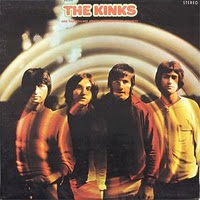 This album still grows on me every time I listen to it! In the title track the Kinks sing ‘God save Donald Duck, Vaudeville and Variety’ and in this collection they do their best to immortalise all kinds of things. If all the world’s music except for this album were suddenly to disappear the Kinks would single-handedly have preserved some simple but catchy pop tunes (“Johnny Thunder” and “Animal Farm”), Vaudeville (in the form of “Sitting By The Riverside”) and Music Hall (“All Of My Friends Were There”) as well as the Village Green. Quite an achievement. But they don’t stop there. They capture the sound of The Grateful Dead and Dylan on “Last Of The Steam-Powered Trains” and is that Hendrix I hear in “Big Sky”? Then there’s the darkly psychedelic “Wicked Annabella” and the latin “Monica”. They do their own take on the “Under My Thumb” Rolling Stones theme in “Starstruck” and the ridiculous in “Phenomenal Cat” (who sounds as if he’s all set to eat the equally ridiculous Donald D). Is there no end to their conserving? “Picture Book” and “People Take Pictures Of Each Other” make sure that our nearest and dearest aren’t forgotten. Rest assured – we’re in safe hands. Taken on their own, many of the songs are rather simple. But put together I believe they amount to an artistic masterpiece – a preserved musical and poetic patchwork of past and present, itself reflecting the patchwork of the countryside that is home to many a village green. –Jim
This album still grows on me every time I listen to it! In the title track the Kinks sing ‘God save Donald Duck, Vaudeville and Variety’ and in this collection they do their best to immortalise all kinds of things. If all the world’s music except for this album were suddenly to disappear the Kinks would single-handedly have preserved some simple but catchy pop tunes (“Johnny Thunder” and “Animal Farm”), Vaudeville (in the form of “Sitting By The Riverside”) and Music Hall (“All Of My Friends Were There”) as well as the Village Green. Quite an achievement. But they don’t stop there. They capture the sound of The Grateful Dead and Dylan on “Last Of The Steam-Powered Trains” and is that Hendrix I hear in “Big Sky”? Then there’s the darkly psychedelic “Wicked Annabella” and the latin “Monica”. They do their own take on the “Under My Thumb” Rolling Stones theme in “Starstruck” and the ridiculous in “Phenomenal Cat” (who sounds as if he’s all set to eat the equally ridiculous Donald D). Is there no end to their conserving? “Picture Book” and “People Take Pictures Of Each Other” make sure that our nearest and dearest aren’t forgotten. Rest assured – we’re in safe hands. Taken on their own, many of the songs are rather simple. But put together I believe they amount to an artistic masterpiece – a preserved musical and poetic patchwork of past and present, itself reflecting the patchwork of the countryside that is home to many a village green. –Jim
Rock
Donovan “Barabajagal” (1969)
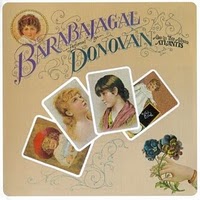 This is the album to play for any of your friends who insist that Donovan just doesn’t rock. The Jeff Beck Group pop in to kick the crap out of the title track, while “Superlungs” also shakes the foundations. (OK, I’m not pretending Deep Purple or Black Sabbath would be shaking in their boots. But heavy they are, my friend.) Elsewhere Don goes “Hey Jude” one better with “Atlantis” by going from spoken introduction to ecstatic freakout, omitting any actual song. “To Susan On The West Coast Waiting” is one of the best anti-war songs in a period not noticeably lacking in anti-war songs, and one of the few that actually expresses empathy for the soldiers doing the fighting. Elsewhere you have the lusty delights of “Pamela Jo” and “Trudi”. And if there’s also a piece of psychedelic silliness called “I Love My Shirt”, well, what did you expect? This is Donovan, remember. A remarkably satisfying listen that still sounds great, if a little short (about 32 minutes in total). –Brad
This is the album to play for any of your friends who insist that Donovan just doesn’t rock. The Jeff Beck Group pop in to kick the crap out of the title track, while “Superlungs” also shakes the foundations. (OK, I’m not pretending Deep Purple or Black Sabbath would be shaking in their boots. But heavy they are, my friend.) Elsewhere Don goes “Hey Jude” one better with “Atlantis” by going from spoken introduction to ecstatic freakout, omitting any actual song. “To Susan On The West Coast Waiting” is one of the best anti-war songs in a period not noticeably lacking in anti-war songs, and one of the few that actually expresses empathy for the soldiers doing the fighting. Elsewhere you have the lusty delights of “Pamela Jo” and “Trudi”. And if there’s also a piece of psychedelic silliness called “I Love My Shirt”, well, what did you expect? This is Donovan, remember. A remarkably satisfying listen that still sounds great, if a little short (about 32 minutes in total). –Brad
Roger McGuinn “Cardiff Rose” (1976)
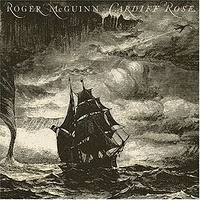 McGuinn wasn’t the most talented songwriter in the Byrds (that was Gene Clark) or the most innovative (that was Chris Hillman), but he was probably the most solid musician and definitely the classiest vocalist. On this album, though, he’s working at peak form and the end result is a minor classic. He’s backed by Dylan’s Rolling Thunder band (here called Guam) and producer-guitarist Mick Ronson, who throws a handful of gravel into McGuinn’s sometimes too-sweet sound. There’s also a strong focus and consistency that his often too diverse other albums lack. The original material — “Take Me Away”, especially — is fine, but the high points are songs by Rolling Thunder collaborators Dylan and Joni Mitchell, both unreleased at the time (and for years after). Of course it wouldn’t be a McGuinn album without a traditional song, and he turns in a lovely, chilling performance on the old ballad “Pretty Polly”. His best post-Byrds work? Almost certainly. –Brad
McGuinn wasn’t the most talented songwriter in the Byrds (that was Gene Clark) or the most innovative (that was Chris Hillman), but he was probably the most solid musician and definitely the classiest vocalist. On this album, though, he’s working at peak form and the end result is a minor classic. He’s backed by Dylan’s Rolling Thunder band (here called Guam) and producer-guitarist Mick Ronson, who throws a handful of gravel into McGuinn’s sometimes too-sweet sound. There’s also a strong focus and consistency that his often too diverse other albums lack. The original material — “Take Me Away”, especially — is fine, but the high points are songs by Rolling Thunder collaborators Dylan and Joni Mitchell, both unreleased at the time (and for years after). Of course it wouldn’t be a McGuinn album without a traditional song, and he turns in a lovely, chilling performance on the old ballad “Pretty Polly”. His best post-Byrds work? Almost certainly. –Brad
Jerry Garcia “Garcia” (1972)
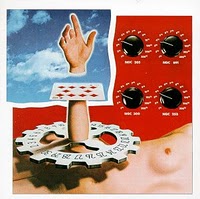 While the Grateful Dead don’t play on Garcia’s first solo album — it’s Jerry on everything except drums, which Bill Kreutzmann plays — you can, fairly, call this a Dead album in disguise. Not only did the six songs on the record all enter the band’s repertoire, most of them becoming mainstays, but the music very much inhabits the same sound world as Workingman’s Dead or American Beauty. Imagining those songs with, say, Bob Weir’s “Playing in the Band” and a Pigpen tune or two is enough to make you mourn the Great Dead Album That Wasn’t. Still, never mind; this is far and away Garcia’s best solo record, and even with the creepy sound experiments that fill out the second side — which I happen to like but clash somewhat — this just misses the full five stars. Apparently it’s Cher’s favourite album ever! –Brad
While the Grateful Dead don’t play on Garcia’s first solo album — it’s Jerry on everything except drums, which Bill Kreutzmann plays — you can, fairly, call this a Dead album in disguise. Not only did the six songs on the record all enter the band’s repertoire, most of them becoming mainstays, but the music very much inhabits the same sound world as Workingman’s Dead or American Beauty. Imagining those songs with, say, Bob Weir’s “Playing in the Band” and a Pigpen tune or two is enough to make you mourn the Great Dead Album That Wasn’t. Still, never mind; this is far and away Garcia’s best solo record, and even with the creepy sound experiments that fill out the second side — which I happen to like but clash somewhat — this just misses the full five stars. Apparently it’s Cher’s favourite album ever! –Brad
The Byrd “Dr. Byrds & Mr. Hyde” (1969)
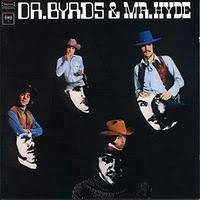 Kicking off with an appropriately incendiary and doom-laden cover of a song best known from the Band’s Big Pink, this is not your L.A. hippie’s Byrds. Or is it? It’s a schizophrenic mess, really, as befits its title: the second track is a bounding little country ditty dedicated to a late dog, and, as a dog lover, I have to say I’ve got a soft spot for this, but it’s an unintegrated piece of a puzzling mess of a record, with a backhanded ode to the shitkickers that inspired their foray into country and western in the first place; a few remnants of their early psychedelic folk; a bizarre blues medley that doesn’t sound like much of anything (and not really in a good way); and a few other hybrids of the kind that would later prompt the term “alt-country.” These, and a really great proto-metal tune called “Bad Night at the Whisky.” Scattershot in song-form, production, and the level of commitment in its songwriting and performance, it’s really a McGuinn solo record backed up with a bunch of studio players who’re not always providing a sympathetic setting for the man’s restless (do I mean aimless?) creativity. Even so, I’d agree with reviewers who say this record doesn’t really get its due, ’cause sometimes there’s something to be said for schizophrenic messes—especially those that have such a strange, dark undercurrent. I probably prefer this to some of their more lauded releases. –Will
Kicking off with an appropriately incendiary and doom-laden cover of a song best known from the Band’s Big Pink, this is not your L.A. hippie’s Byrds. Or is it? It’s a schizophrenic mess, really, as befits its title: the second track is a bounding little country ditty dedicated to a late dog, and, as a dog lover, I have to say I’ve got a soft spot for this, but it’s an unintegrated piece of a puzzling mess of a record, with a backhanded ode to the shitkickers that inspired their foray into country and western in the first place; a few remnants of their early psychedelic folk; a bizarre blues medley that doesn’t sound like much of anything (and not really in a good way); and a few other hybrids of the kind that would later prompt the term “alt-country.” These, and a really great proto-metal tune called “Bad Night at the Whisky.” Scattershot in song-form, production, and the level of commitment in its songwriting and performance, it’s really a McGuinn solo record backed up with a bunch of studio players who’re not always providing a sympathetic setting for the man’s restless (do I mean aimless?) creativity. Even so, I’d agree with reviewers who say this record doesn’t really get its due, ’cause sometimes there’s something to be said for schizophrenic messes—especially those that have such a strange, dark undercurrent. I probably prefer this to some of their more lauded releases. –Will
Bruce Springsteen “Nebraska” (1982)
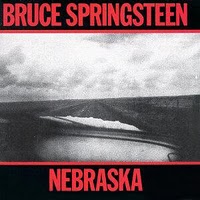 For this, I will forgive all the frat boy anthems. For this, I will forgive “Dancing in the Dark”. Hell, I’ll forgive Springsteen’s entire post-1985 career for this haunted, scarifying record that seems beamed directly in from a black and white movie from 1949. In its own strange way it’s as avant-garde as any French new wave film; here’s an eternally rural America where teenagers kill their families, the churches are filled with bodies, the highway stretches out endlessly before us and it’s always the hour before dawn. –Brad
For this, I will forgive all the frat boy anthems. For this, I will forgive “Dancing in the Dark”. Hell, I’ll forgive Springsteen’s entire post-1985 career for this haunted, scarifying record that seems beamed directly in from a black and white movie from 1949. In its own strange way it’s as avant-garde as any French new wave film; here’s an eternally rural America where teenagers kill their families, the churches are filled with bodies, the highway stretches out endlessly before us and it’s always the hour before dawn. –Brad
Robert Fripp “Exposure” (1979)
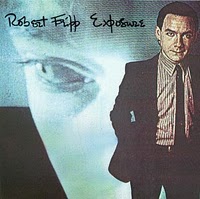 I may be alone in thinking this is a greater record than anything King Crimson ever did, but I shouldn’t be. Here Fripp harnesses his experimental side to actual polished pop songs — nothing here goes much over four minutes — and the cast of thousands is used to good effect. Terre Roche screams her lungs out on the title track, a kind of modernist update of “The Great Gig in the Sky”; Peter Gabriel reprises “Here Comes the Flood”, perhaps the most affecting song either he or Fripp has ever been connected with; and Daryl Hall, of all people, hits the high spot with his wistful voice on the guitar looped “North Star”. It’s the perfect meld of prog-meets-art rock-meets-new wave-meets-soul, and I don’t think it’s a coincidence that it came out in 1979, a time when music had collapsed into a huge melting pot and for a brief moment anything seemed possible (of course it all began to harden into separate genres — very separate — almost immediately). No coincidence, either, that Exposure marks a decade since In the Court of the Crimson King. –Brad
I may be alone in thinking this is a greater record than anything King Crimson ever did, but I shouldn’t be. Here Fripp harnesses his experimental side to actual polished pop songs — nothing here goes much over four minutes — and the cast of thousands is used to good effect. Terre Roche screams her lungs out on the title track, a kind of modernist update of “The Great Gig in the Sky”; Peter Gabriel reprises “Here Comes the Flood”, perhaps the most affecting song either he or Fripp has ever been connected with; and Daryl Hall, of all people, hits the high spot with his wistful voice on the guitar looped “North Star”. It’s the perfect meld of prog-meets-art rock-meets-new wave-meets-soul, and I don’t think it’s a coincidence that it came out in 1979, a time when music had collapsed into a huge melting pot and for a brief moment anything seemed possible (of course it all began to harden into separate genres — very separate — almost immediately). No coincidence, either, that Exposure marks a decade since In the Court of the Crimson King. –Brad
Traffic “Mr. Fantasy” (1967)
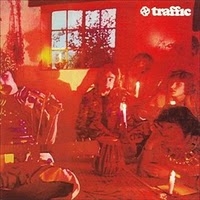 I don’t know whose idea it was to have Steve Winwood start wearing those big shouldered blazers back in the 80s, but that person should be beaten, or maybe put in the stocks medieval style. If Steve himself made this decision, well, I can only put my head in my hands and sigh. I hated his yuppie pop period in the 80s, but this was before I discovered Traffic and the Spencer Davis Group, two bands which definitely changed my view of him considerably. There are so many different versions of this album, but I think I’m covered because I have the reissue which includes the Heaven Is In Your Mind version, which is kind of the same thing, but was only released in the US. Anyway, I like the uniqueness of their sound and the fact they weren’t just another generic hippie dippy psych band. Great nods to jazz and world music, plus interesting uses of flute and sitar. I guess the jazz influence would grow more prominent on subsequent albums. “Dealer” could just be my all time favourite Traffic song with its Spanish style guitar. Just Beautiful. –Neal
I don’t know whose idea it was to have Steve Winwood start wearing those big shouldered blazers back in the 80s, but that person should be beaten, or maybe put in the stocks medieval style. If Steve himself made this decision, well, I can only put my head in my hands and sigh. I hated his yuppie pop period in the 80s, but this was before I discovered Traffic and the Spencer Davis Group, two bands which definitely changed my view of him considerably. There are so many different versions of this album, but I think I’m covered because I have the reissue which includes the Heaven Is In Your Mind version, which is kind of the same thing, but was only released in the US. Anyway, I like the uniqueness of their sound and the fact they weren’t just another generic hippie dippy psych band. Great nods to jazz and world music, plus interesting uses of flute and sitar. I guess the jazz influence would grow more prominent on subsequent albums. “Dealer” could just be my all time favourite Traffic song with its Spanish style guitar. Just Beautiful. –Neal
Van Halen “Van Halen” (1978)
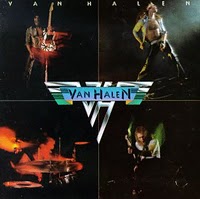 Born from the clubs of LA’s Sunset Strip, Van Halen is a manifesto of life lived in the extreme – hot nights in pursuit of booze and babes, all else be damned. An album that embodies rock’s basic love of wild, party-hearty recklessness with a shot of danger, Van Halen’s personality lives and breathes it’s two frontmen, as over a rock solid rhythmic foundation laid down by Michael Anthony and Alex Van Halen, Eddie dances on a six-string, nickel plated tightrope, while Diamond Dave gives his best peacock impression throughout the classic disc. Decades later, Eddie’s seemingly second-nature abilities still astonish, while Roth is from a land that time forgot, possessing a sense of showmanship and confidence that simply wouldn’t make it past today’s thought police. Van Halen’s timelessness is insured by this cocksure combo of intoxicated revelry and overflowing talent. A solid half of Van Halen has become ubiquitous: “Ain’t Talkin’ About Love,” the steamy “Runnin’ With the Devil,” hard rock candy of “Jamie’s Cryin’,” prowling “Feel Your Love Tonight,” and the smirking cover of The Kinks’ “You Really Got Me.” But the rest of the disc is just as stellar, featuring the blazing “On Fire,” high voltage aggression of “Atomic Punk” and “I’m the One,” jokey blues strutter “Ice Cream Man,” and the blurry-eyed “Little Dreamer.” And one can’t forget “Eruption,” a two minute, tossed-off guitar stunt suited perfectly to this album’s blaring braggadocio. Ted Templeman’s production breathes with a sweaty, live energy, and with it’s bulletproof lineup, Van Halen rolls down the boulevard crusin’ for action, it’s wares on full display, ready to take on all comers. –Ben
Born from the clubs of LA’s Sunset Strip, Van Halen is a manifesto of life lived in the extreme – hot nights in pursuit of booze and babes, all else be damned. An album that embodies rock’s basic love of wild, party-hearty recklessness with a shot of danger, Van Halen’s personality lives and breathes it’s two frontmen, as over a rock solid rhythmic foundation laid down by Michael Anthony and Alex Van Halen, Eddie dances on a six-string, nickel plated tightrope, while Diamond Dave gives his best peacock impression throughout the classic disc. Decades later, Eddie’s seemingly second-nature abilities still astonish, while Roth is from a land that time forgot, possessing a sense of showmanship and confidence that simply wouldn’t make it past today’s thought police. Van Halen’s timelessness is insured by this cocksure combo of intoxicated revelry and overflowing talent. A solid half of Van Halen has become ubiquitous: “Ain’t Talkin’ About Love,” the steamy “Runnin’ With the Devil,” hard rock candy of “Jamie’s Cryin’,” prowling “Feel Your Love Tonight,” and the smirking cover of The Kinks’ “You Really Got Me.” But the rest of the disc is just as stellar, featuring the blazing “On Fire,” high voltage aggression of “Atomic Punk” and “I’m the One,” jokey blues strutter “Ice Cream Man,” and the blurry-eyed “Little Dreamer.” And one can’t forget “Eruption,” a two minute, tossed-off guitar stunt suited perfectly to this album’s blaring braggadocio. Ted Templeman’s production breathes with a sweaty, live energy, and with it’s bulletproof lineup, Van Halen rolls down the boulevard crusin’ for action, it’s wares on full display, ready to take on all comers. –Ben
Thin Lizzy “Jailbreak” (1976)
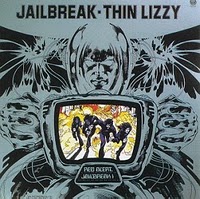 Containing the only two Thin Lizzy tracks you’re ever likely to hear on the restricted playlists of classic rock radio in the US, with the barroom nostalgia of “The Boys Are Back in Town” and tight-fisted title track, Jailbreak has become the most recognized release of the band’s existence. In many ways, the album simply carries on from Fighting in it’s mix of classic Lizzy rockers featuring generous amounts of their signature dual guitar sound, and an abundance of mellower songs highlighting Lynott’s penchant for romantic lyricism. The heavier tracks are some of the band’s best yet, with the bold “Warriors” and battlefield tale “Emerald,” but the band turns in some stellar easygoing entries like the wistful “Cowboy Song,” catchy “Running Back,” and broken-hearted “Romeo and the Lonely Girl.” Throughout, Lynott’s expressive vocals and the band’s high-caliber musicianship add an earnestness to the material, without sacrificing the power at the band’s core. –Ben
Containing the only two Thin Lizzy tracks you’re ever likely to hear on the restricted playlists of classic rock radio in the US, with the barroom nostalgia of “The Boys Are Back in Town” and tight-fisted title track, Jailbreak has become the most recognized release of the band’s existence. In many ways, the album simply carries on from Fighting in it’s mix of classic Lizzy rockers featuring generous amounts of their signature dual guitar sound, and an abundance of mellower songs highlighting Lynott’s penchant for romantic lyricism. The heavier tracks are some of the band’s best yet, with the bold “Warriors” and battlefield tale “Emerald,” but the band turns in some stellar easygoing entries like the wistful “Cowboy Song,” catchy “Running Back,” and broken-hearted “Romeo and the Lonely Girl.” Throughout, Lynott’s expressive vocals and the band’s high-caliber musicianship add an earnestness to the material, without sacrificing the power at the band’s core. –Ben
Roxy Music “Roxy Music” (1972)

An insane record that sounds at times like rock ‘n’ roll risen from the dead (the original post-rock?): Bryan Ferry’s a vampire in too-tight tuxedo, drunk out of his mind on champagne at a cocktail party and desperately declaring how he used to be a star (a unique and paradoxical property for a frontman’s debut); Brian Eno’s synths spread gloomy atmospherics like a fog machine, his keys stab clumsily like a Jerry Lee Lewis rebuilt by Frankenstein; Andy Mackay spit-shines the rough edges with creepy Teutonic reeds and squealing brass; Paul Thompson galumphs along like a Stax stable studio drummer kept alive by amphetamines; and Phil Manzanera’s overdriven six-string heroics harness noise like White Light/White Heat era Lou Reed with years of lessons.
This is in many ways the quintessential Roxy album (although I’d be tempted to say the same about the next three). Their sly, subversive pop is at its most unhinged here, at its riskiest and most outrageous, making few concessions to commercialism and with a self-aware artiness and goofiness that contrasts rather sharply with Ferry’s later shameless self-promotion as refined European Romantic (a self-stylization that would eventually get the best of him). By no means is it their best album—their ambitions exceed their abilities in a few places, and the suave, smarmy refinements of For Your Pleasure now seem conspicuously absent—and I agree with most reviewers who suggest it’s rather top-heavy—but it’s a milestone of 70s rock, nonetheless; an important template for much that followed; and thus arguably the group’s most important. –Will
Atomic Rooster “Death Walks Behind You” (1970)
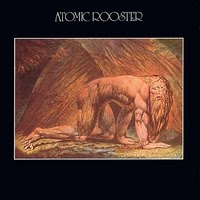 Death Walks Behind You opens with the title track – a study in what I would term doom rock (it’s in the direction of doom metal, but isn’t quite metal). It’s a good hard rocker with a nice riff; it starts off building a doom laden atmosphere real slow and then kicks into a blues rock theme; it’s perhaps a little too long. “V.U.G.” is an impressive instrumental piece, and “Tomorrow Night” (the single off the album) is an excellent simple rocker. It was my introduction to this great band. “Seven Lonely Streets” closes the 1st side. Despite an unconvincing vocal performance from Cann it has some good jamming and a brilliant hook – you know – the kind that’s still going through your head when you wake up in the middle of the night. On the second side “Sleeping For Years” is yet another good hard rocker with a great hook. “I Can’t Take No More” is kind of pop-rock, almost a precursor to the kind of song Cann would produce 10 years later. “Nobody Else” starts off nice and quiet on the piano before rocking out from about halfway. It’s pretty good, sort of contemplative. The last track, “Gerschatzer” (a german-sounding word with no meaning), is instrumental only. It starts off brightly but gets a bit messy, as much of what is termed ‘prog’ tends to. I would recommend this to anyone interested in hard rock, particularly of the Deep Purple or early Sabbath variety. This is possibly their best album, though it’s hard to pick out one of their first three albums. –Jim
Death Walks Behind You opens with the title track – a study in what I would term doom rock (it’s in the direction of doom metal, but isn’t quite metal). It’s a good hard rocker with a nice riff; it starts off building a doom laden atmosphere real slow and then kicks into a blues rock theme; it’s perhaps a little too long. “V.U.G.” is an impressive instrumental piece, and “Tomorrow Night” (the single off the album) is an excellent simple rocker. It was my introduction to this great band. “Seven Lonely Streets” closes the 1st side. Despite an unconvincing vocal performance from Cann it has some good jamming and a brilliant hook – you know – the kind that’s still going through your head when you wake up in the middle of the night. On the second side “Sleeping For Years” is yet another good hard rocker with a great hook. “I Can’t Take No More” is kind of pop-rock, almost a precursor to the kind of song Cann would produce 10 years later. “Nobody Else” starts off nice and quiet on the piano before rocking out from about halfway. It’s pretty good, sort of contemplative. The last track, “Gerschatzer” (a german-sounding word with no meaning), is instrumental only. It starts off brightly but gets a bit messy, as much of what is termed ‘prog’ tends to. I would recommend this to anyone interested in hard rock, particularly of the Deep Purple or early Sabbath variety. This is possibly their best album, though it’s hard to pick out one of their first three albums. –Jim


